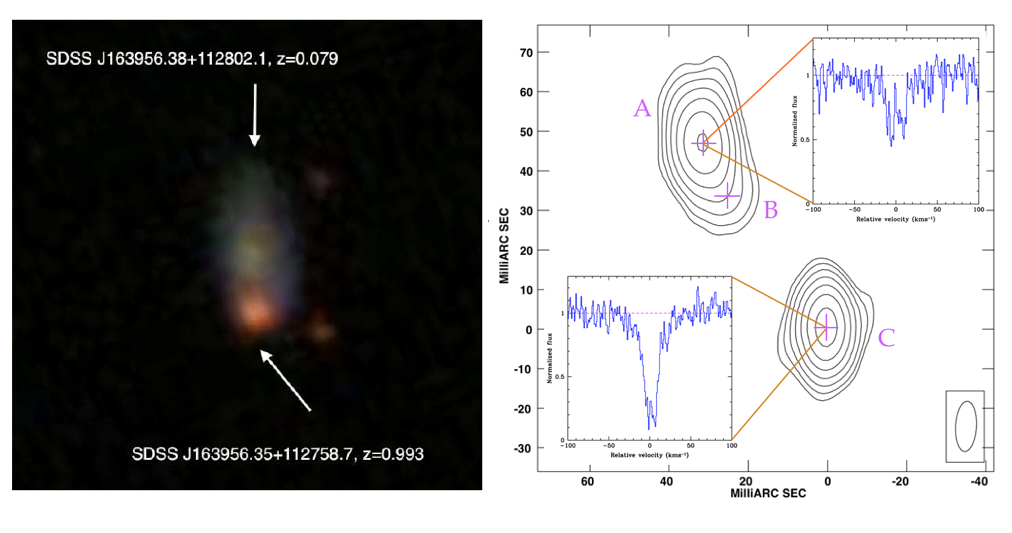Daily Image
21-03-2013Today's Colloquium: Galaxies in 21-cm absorption at 0 < z < 3.5
| Submitter: | Neeraj Gupta (ASTRON) |
| Description: | It is well known that the physical conditions in the diffuse interstellar medium (ISM) of galaxies are influenced by various radiative and mechanical feedback processes associated with in situ star-formation. Absorption lines seen in the spectra of distant quasars provide an unique tool to trace the physical conditions in the ISM of galaxies in a luminosity unbiased way. Of particular interest is the evolution of cold atomic and molecular gas phases in galaxies that serve as the gaseous reservoir for star formation and are expected to be intimately related to the processes that shape the star-formation history of the Universe. In this talk, I will present the results from our 21-cm absorption line surveys using the GBT, GMRT, VLBA and WSRT to trace the evolution of cold atomic gas in galaxies at 0 < z < 3.5. I will discuss the detectability and nature of 21-cm absorbers using constraints on the physical properties of the absorbing gas obtained using various molecular and metal absorption lines at optical/UV wavelengths, and milliarcsecond scale spectroscopy. The image above shows the SDSS image of the quasar (J163956+112758) from our sample. The quasar sight line passes through the foreground galaxy at z~0.1. The background quasar is resolved into multiple components with a maximum separation of 89 pc at the redshift of the galaxy. The normalized 21-cm absorption profiles towards the peaks of the two strongest components, A and C, separated by 89 pc, are also shown. The comparison of these spectra with the GMRT 21-cm absorption spectra shows that the 21-cm absorbing gas has structures at scales of 10-100 pc. |
| Copyright: | Neeraj Gupta |
| Tweet |  |
